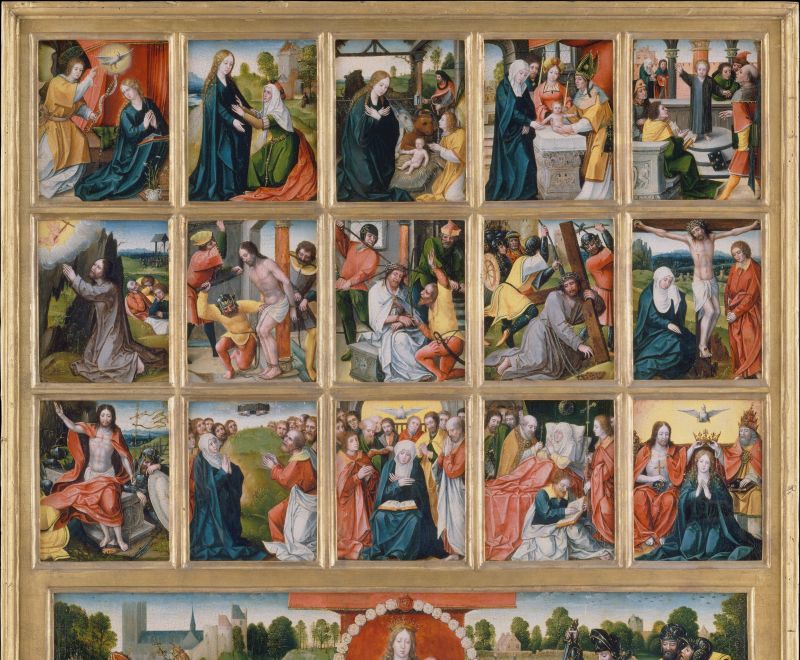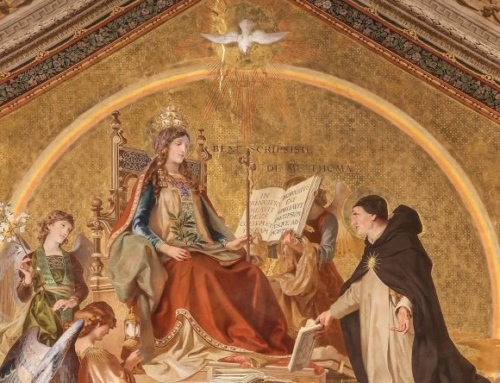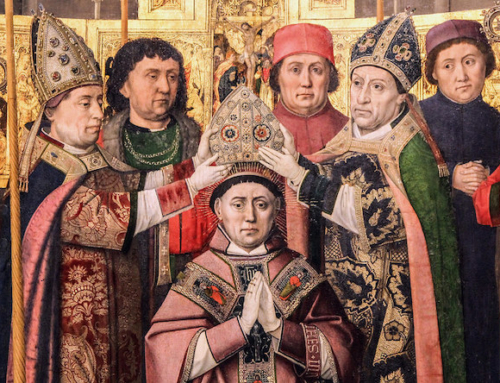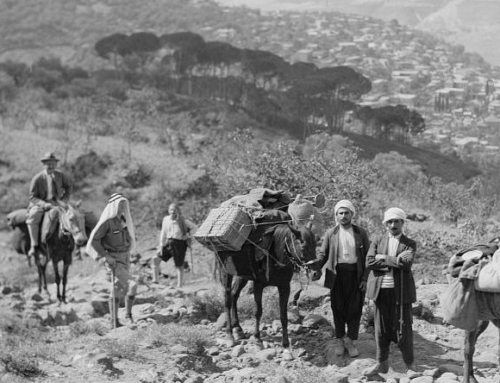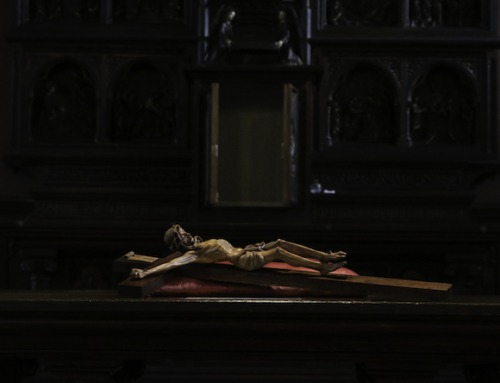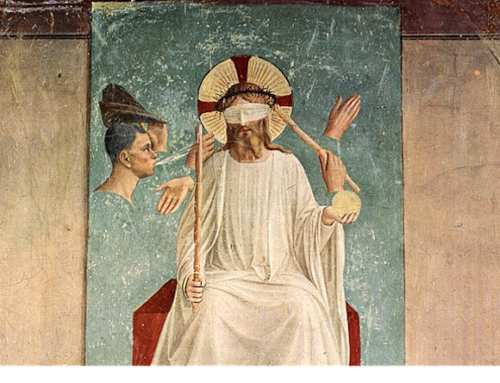Editor’s Note: Today we are delighted to release the online edition of Dominicana 67 (2025), which is distinct from the content published regularly on the blog. This year’s edition of Dominicana considers the most holy Rosary, its provenance, and its remarkable effects in the world.
As a sidenote to our regular subscribers, we have altered the numbering scheme of Dominicana, matching vol. 67 with 2025, to reflect the fact that we publish the print journal in the new year, rather than at the year’s end. Thus, the issues jumped straight from 2023 to 2025, and there never was a “2024 issue” of the journal.
Please find below the introductory editorial, along with a PDF preview of the table of contents and one free article. To order a digital or print subscription, please click here. As always, we are deeply grateful for your support, all of which goes toward our religious and priestly formation.
May God bless you, and be assured of our prayers!
* * *
The most holy rosary of the Blessed Virgin Mary is a sure aid to salvation. Our salvation consists in being conformed to Jesus Christ. The life of our souls is charity, famously defined by Saint Thomas Aquinas as friendship with God (Summa Theologiae II-II, q. 23, a. 1). Any true friendship requires familiarity with the friend. We cannot love what we do not know. God loves us first, enabling us to love him in turn (1 Jn 4:19). But to love God requires that we seek to know him better. God entered the world and took on human flesh in order that we might know him better. But how, today, do we come to know him?
The rosary helps us to know Jesus Christ. It does so by placing before the eyes of our souls the mysteries of Christ’s life—those events by which he revealed himself and accomplished our salvation. It has been given to us by the Blessed Virgin Mary, she who knew Christ best and who now reigns with him in heaven. As Saint John Paul II expressed it, the rosary contains the memories of Mary, and praying it allows us to share in her contemplation of her divine Son (Rosarium Virginis Mariae 11). The rosary helps us to know who Christ is and what he did during his life on earth, so that we might let him act in our lives today. As the beads slip through our fingers one after another, the words of the Scriptures work their way into our souls—recalling for us God’s saving actions—and we offer to God one doxology after another—pointing ahead to the life of beatitude.
As Dominican friars, we wear our Lady’s rosary as part of our habit. We entrust all that we do to our Blessed Mother’s intercession. We preach Christ and his mysteries for the salvation of souls. For all these reasons, we are happy to present to our readers Dominicana 67. We offer it as a small way in which we can help preach our Lady’s rosary.
Brother Raphael begins our volume by directing our attention to the Incarnation, meditating on Jesus as the “secret” of God, the perfect means by which the Father has revealed to humanity his innermost thoughts. Brother Thaddeus next pays homage to the Mother of the Redeemer. Beginning from the Old Testament Wisdom Literature, he shows how the human yearning for wisdom is fulfilled in the gift of Wisdom from above, given to us through the Blessed Mother.
Brother Cassian considers how the rosary can aid the lives of individual believers, highlighting the often misunderstood but significant concept of spiritual warfare. Brother Jeremiah offers a rich exposition of the history of Our Lady of Pompeii—a devotion worthy of greater attention, first spread by the remarkable Blessed Bartolo Longo. Brother Patrick in his essay offers rich material for the spiritual life, meditating on the role that the Blessed Virgin Mary plays in guiding, consoling, and uplifting her children.
Besides our essays, we are delighted to offer two interviews conducted by student brothers. Brother Finbar has interviewed Fr. David Marcham, the postulator for the cause for canonization of Fr. Patrick Peyton (the “Rosary Priest”). Brother Samuel has interviewed Fr. James Brent, O.P., a member of the Province of St. Joseph with many years of experience preaching the rosary.
Brother Roland presents readers with a window into the story of St. Dominic receiving the rosary from our Lady. This pious tradition, often referenced but rarely described, was retold by the 18th-century Spanish Dominican Antonio Garcés. Brother Roland offers here a translation of that narrative from the original Spanish.
We are also happy to provide reviews of several recently published works. Brother Barnabas unpacks the wisdom contained in Suffering: What Every Catholic Should Know, by Mark Giszczak. Brother Francis introduces to readers What is Christianity? The Last Writings, a collection of works by Pope Benedict XVI written in the final years of his life. Brother Athanasius details The True Christian Life, a compilation of reflections by Ambroise Gardeil, O.P., first published posthumously in 1935. Brother Andrew reviews Mysteries of the Lord’s Prayer, an exposition of early Christian teaching on the Our Father, written by Fr. John Gavin, S.J. Brother Sebastian presents to readers Am I Not Your Mother? Reflections on Our Lady of Guadalupe written by the spiritual master Luis M. Martínez, archbishop of Mexico City in the early 20th century.
Finally, in our art essay, Br. Augustine considers how the rosary is analogous to a chapel in sanctifying Christian life; as the chapel provides physical space within which believers gather to pray, so the rosary provides a temporal space in which to encounter God. He illustrates this point by examining the structure of the Rosary Chapel in the Basilica of the National Shrine of the Immaculate Conception. We are grateful to the staff at the Basilica for permission to include photos of that chapel in the essay.
In addition to the pieces composed by student brothers, this volume features the artwork of the 19th-century French painter James Tissot. Late in his life, Tissot experienced a renewal of his Catholic faith and turned his talents to producing religious art. In the late 1800s he traveled to the Middle East in order to familiarize himself with the Holy Land firsthand. He produced hundreds of paintings depicting Biblical scenes, centering on the life of Christ. It is our hope that these images, drawn from both Old and New Testaments, may help to animate this volume dedicated to the rosary and its mysteries.
Our Lady of the Rosary, pray for us.
Click here for PDF versions of the Table of Contents, here for the Argument, and here for Br. Thaddeus’ article, “Sedes Sapientiae.”
✠
Image: Netherlandish (Brussels) Painter, The Fifteen Mysteries and the Virgin of the Rosary (detail)

